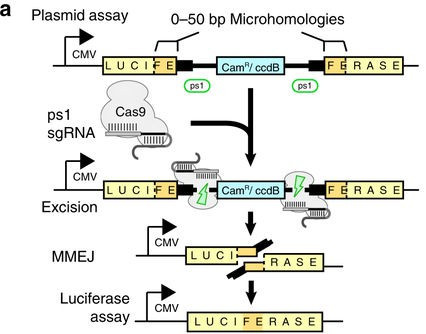Japan's CRISPR gene editing technique has reached the level of 'absolute precision'
Genetic modification technology has the ability to completely change our world. Among these techniques is CRISPR, a method for fine-tuning genes that is cheap but accurate.
CRISPR promises to repair the sick DNA errors in us, kill pathogenic bacteria, improve the nutrition of food and even revive extinct species.
While the ethical concerns of this technology still exist, technically, CRISPR has grown to the extent that it is possible to edit the base pairs (AT, GC) on the DNA of the human genome. Japanese scientists say they have reached this level and call it 'absolute precision' genetic modification .

CRISPR gene editing has reached "absolute accuracy" , according to Japanese scientists.
The new technique is described in Nature Communications magazine. It is referred to as MhAX (Micro-hologic-Assisted eXcision). This method was developed by a team of scientists studying the single nucleotide DNA (SNP-single nucleotide polymorphism) mutation that causes genetic disease.
To demonstrate a single nucleotide DNA mutation that causes a disease, you need to compare 'twin' cells, with identical DNA, just different from a single (AT, GX) pair. This is particularly difficult in real terms, but scientists have successfully developed MhAX to solve the problem.
To make the super-precise correction on a base pair, the scientists inserted an SNP nucleotide next to a fluorescence emission gene . This emission gene helps researchers identify modified cells.
They then designed a duplicate DNA sequence called microhomology on each side of the fluorescent gene, targeting locations for CRISPR to enter and cut DNA. Next, an intermediate microbial DNA repair system (MMEJ) removes the fluorescent gene.
The result is only one pair of facilities remaining, in the form of an SNP, the rest of the DNA is cut and edited.

Technical description of MhAX in Japanese scientists' research.
Targeting and editing this particular gene is really accurate."Our goal is to create genetic modification technologies that enhance our understanding of disease mechanisms and ultimately lead to treatments ," said Dr. Knut Woltjen, head of the study. save, said.
"We believe that MhAX will be able to be widely applied in the current human pathology study, and in the future further."
- The first time the CRISPR gene editing process is back
- CRISPR gene editing technique will make cancer cells no longer immortal
- The unpredictable harm from Chinese scientists' genetic modification experiment
- Learn about CRISPR - The genetic modification technology that China has just surpassed the United States
- The world's first human genome
- For the first time, three cancer patients in the US were treated with CRISPR gene editing technology
- US gene editing albino lizard
- Chinese gene embryo-producing anti-HIV virus
- Pigs can 'donate' to people
- The statement by the Chinese scientist about genetically modified children is disgusting
- Editing genes can lose geniuses
- The project helps you to edit your own DNA at home
 Green tea cleans teeth better than mouthwash?
Green tea cleans teeth better than mouthwash? Death kiss: This is why you should not let anyone kiss your baby's lips
Death kiss: This is why you should not let anyone kiss your baby's lips What is salmonellosis?
What is salmonellosis? Caution should be exercised when using aloe vera through eating and drinking
Caution should be exercised when using aloe vera through eating and drinking